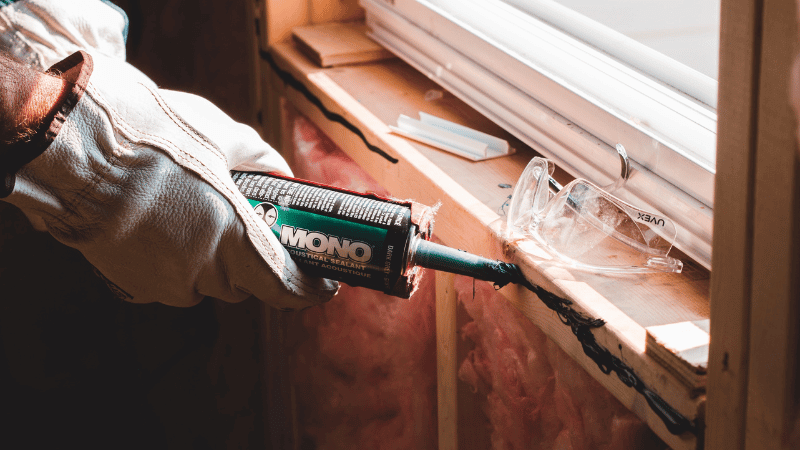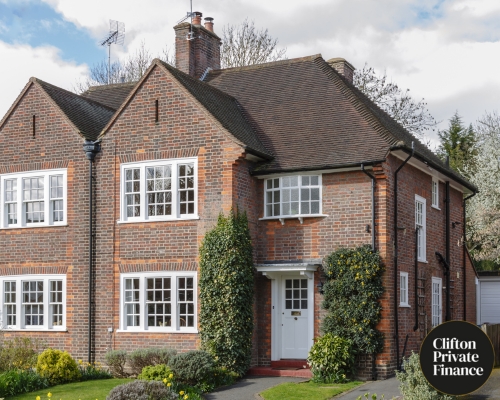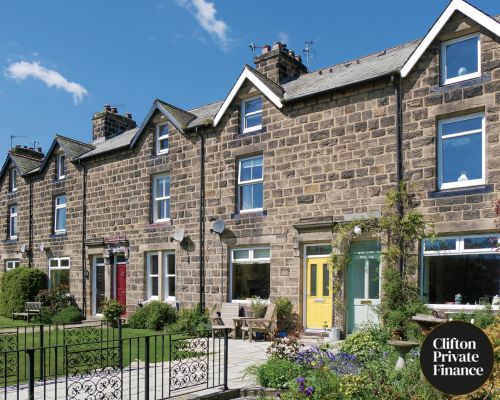Categories
How To Get A Bridging Loan To Buy, Refurbish And Sell A House

Property flipping can provide healthy returns if done correctly. If you've found a 'fixer-upper', you could use a bridging loan to refurbish and sell it.
Unless you have a significant amount of cash at your disposal, you will likely need to borrow finance to fund the purchase and renovation work you need to do. Many property developers use refurbishment bridging loans to complete their development projects.
Using a Bridging Loan to Buy, Refurbish and Sell a House: The Overview
Bridging loans are renowned for their quick turnaround and funding processes, which can be advantageous in both the purchase and renovation of a property.
- Bridging loans can be approved in a matter of weeks, allowing you to take advantage of time-sensitive investments, such as auction properties. Overall, a bridging loan can empower you to act quickly, which is more challenging if you want to take out a mortgage.
- The process of purchasing a property, renovating it and preparing it for resale can take between 6-12 months, depending on the market and your experience. Bridging finance is designed to be paid back within 12 months, so it can function as an injection of funds that can be repaid once the property has been sold.
- Bridging loans often come with more flexible repayment terms compared to traditional mortgages. This flexibility can be beneficial for individuals who plan to sell the property quickly after renovation, as they may be able to repay the loan without incurring early repayment penalties.
See similar: Home Improvement Loans- The 7 Best Options
In this guide:
Limitations of High Street Lenders
Why Use a Refurbishment Bridging Loan?
What are the Property Refurbishment Loan Lending Criteria?
Will You Need a Light or Heavy Refurbishment Loan?
How to Apply for a Refurbishment Loan Today
The Limitations of High Street Lenders
In most cases, traditional lenders, such as high-street banks, cannot provide the fastest and most straightforward means of obtaining funding.
Although you may think that approaching a traditional lender for finance is your best option, you will likely come across the following pitfalls:
Rigid financial products
Traditional lenders offer a limited number of financial products geared towards only a handful of circumstances.
Their loan products are well-suited to long-term projects such as residential mortgages but rarely cater to short-term finance requirements. Therefore, traditional lenders may not be able to get the right finance for your development.

Sam O'Neill
Head of Bridging
One of the main attractions of bridging loans is being able to act like a cash buyer in the property market.
You have the speed and flexibility to snap up a desirable opportunity, where it would be too slow to sell your house first or put a traditional mortgage in place.
Limited property types
Buying a rundown property at a low price and upgrading it to a standard that would attract much higher offers is a popular way for developers to maximise profits.
Developers often find properties at auction under market value, which can help them save a significant amount of money on their development projects.
These properties can often be in such bad condition that they are deemed unmortgageable by traditional lenders who refuse to provide financing for them.
In many cases, this is due to issues or risks present in the property that make the building uninhabitable.
Identifying which properties a traditional lender sees as high risk and deems unmortgageable is essential. Traditional lenders will usually classify the following as unmortgageable properties:
- Valued under £50,000
- With structural issues
- Without a kitchen or bathroom
- In a derelict condition
If a property you have your eye on fits into the criteria above, it is likely that a traditional lender will not provide the finance you need.
It would help if you also remembered that traditional lenders set a cap on the number of properties you can have when applying for a loan. This may restrict your borrowing options if you own multiple properties.
In-depth portfolio review...
Most traditional lenders conduct an in-depth review of an applicant's property portfolio to ensure that the applicant has a history of successful developments.
The review will also examine the applicant's financial situation. This is to determine whether the applicant can repay the loan.
Therefore, if you do not have the necessary experience, your portfolio is not as strong as the lender would like, or the lender is not satisfied that you can afford the loan repayments, your application may not be successful.
Lengthy application process...
It is not uncommon for applications with a traditional lender to take up to several weeks or even months to process.
A delay of that length could not only have significant ramifications on your development timeline, but it could mean you lose out on the property you intend to purchase to another buyer.
To minimise the chance of experiencing a delay, you may want to look to another lender to secure your finance.
Why Use a Refurbishment Bridging Loan?
A refurbishment bridging loan is a type of loan that is designed specifically for short-term usage. A refurbishment loan can provide a substantial amount of finance within a short timeframe and can 'bridge' the gap when there is a shortfall in funding.
Refurbishment loans are becoming increasingly popular with developers, as they often have attractive features that lend themselves to property development.
Refurbishment loans give you access to significant funds
Refurbishment bridging finance can provide developers with a way to get substantial funding for their developments.
Some lenders we work with are willing to grant refurbishment bridging finance from £50,000 to £25 million.
Of course, the amount you can access will depend on your circumstances and financial position.
Refurbishment bridging loans come with flexible interest payments
Regulated bridging loans typically come with the option to 'roll up' the interest you pay at the end of the loan term instead of monthly.
The ability to roll-up interest for the end of the loan could be attractive, as it could minimise the amount you have to pay each month, and you could have more capital available for your development.
Refurbishment loans come with flexible terms
Unlike traditional lenders, specialist lenders that offer home improvement loans gear their finance towards short-term projects. Refurbishment loan lenders often provide financing terms between 3 and 24 months.
The short terms of finance lend themselves to property development, as you can access a significant amount of finance without locking yourself into a long-term loan agreement.
Traditional lenders usually charge early repayment penalties if a loan is fully repaid before the agreed deadline, whereas refurbishment loan lenders rarely charge early repayment penalties.
This means that if you finish your development earlier than expected, you will not be penalised for repaying the loan before the end of the term of finance.
Related: Home Improvements That Add the Most Value
What are the Criteria for a Refurbishment Bridging Loan?
A strong exit plan is the primary requirement lenders look for when considering a refurbishment loan application.
Your exit plan is the strategy you will use to repay the loan at the end of the loan term,for example, using the proceeds of the sale of your property to repay the loan once the development is complete. Or you can refinance through a residential or buy-to-let mortgage.
- Eligibility: secured on assets, individuals, companies and SPVs
- Credit history: no credit and bad credit is usually not a problem
- Loan to Value (LTV): maximum 75% (100% with additional security)
- Loan term: 3-36 months
- Loan amount: £50,000 up to £25m
- Interest options: rolled up, retained or serviced
- An immediate decision in principle
- Completion: in under two weeks
- Exit: sale or refinance
If you have any questions about your eligibility for a bridging loan, speak to one of our bridging loan advisors, who will be happy to discuss your situation.
Bridging loan advice can give you peace of mind that you're taking out the right loan for your needs at the right price and with no hidden fees.
Discover how we've helped thousands of our clients secure bridging finance to flip a property:






What Fees Do Refurbishment Bridging Loans Have?
Arrangement Fee
Charged by the lender for setting up the loan, this fee is typically a percentage of the loan amount and can range from 1% to 2% or more. It is often deducted from the loan proceeds.
Valuation Fee
The cost of a property valuation is typically borne by the borrower. Lenders may require a professional survey to assess the property's value before approving the loan.
Broker Fees
If you use a broker to help you find a suitable bridging loan, there may be broker fees involved. These fees can be paid by the borrower, the lender, or a combination of both.
Admin Fees
Lenders may charge administrative fees to cover the costs of processing the loan application and managing the loan throughout its term.
To get an idea of what interest rates to expect on your refurbishment bridging loan, see the recent rates we've secured for clients below:
Rates from: Downsizing/Upsizing Releasing Funds From Your Home Short-Term Lease Finance Auction Purchase As at 3rd January 2024 Rates from: Light & Heavy Refurb Finance For Unmortgageable Properties Land Purchase with planning As at 3rd January 2024 Rates from: Up to 80% LTV Minimum Loan £500k Minimum net income £100k As at 3rd January 2024 Thank You for your interest - please complete the form below and a member of our team will be in contact.Residential
Buying Before Selling?
0.50% pm
Development & Refurb
Fast Finance
0.50% pm
Residential
Large Bridging Loans
0.50% pm
Contact Us
Will You Need a Light or Heavy Refurbishment Bridging Loan?
Light refurbishment loan
Light refurbishments will cost under 15% of the property's value and are focussed on aesthetic improvements such as painting, installing a new kitchen or central heating system, or replastering.
Heavy refurbishment loan
In most cases, heavy renovations will cost more than 15% of the property's value. Planning permission may be needed for structural work, as well as adhering to building regulations. Examples include extensions and loft conversions.
Use our refurbishment bridging loan calculator below to determine how much you could borrow for your renovation project.
How to Apply for a Refurbishment Bridging Loan
High street banks no longer offer bridging loans in the UK. If you plan on taking out a refurbishment bridging loan, you'll need to source one from a specialist lender.
Private and specialist lenders typically use finance brokers to find clients and are not as easy to find or access as high street lenders. An experienced bridging loan broker will have an in-depth experience of the market and can connect you with the most suitable lender for your circumstances.
At Clifton Private Finance, we have an award-winning bridging team, and we can get the best rates on the market. If you have found a property you wish to purchase, develop and sell, we can get the best finance to meet your needs.
We have strong relationships with lenders offering both light and heavy refurbishment bridging loans and will be able to secure the best financial solution for you. We can guide you through your options and source finance as quickly as possible.
To discuss your options, call us at 0203 900 3040 or book a consultation below:


FAQs
Yes, a valuation is typically required for a bridging loan in the UK. Since bridging loans are often secured against a property or other valuable assets, lenders will want to assess the market value of the property being used as security. This helps the lender determine how much deposit they want you to provide based on the value and condition of the property. You can borrow up to £25m with bridging finance, but it’s typically capped at about 80% of the value of the property you’re using as security. It's important to note that different lenders have varying policies and criteria regarding the maximum loan amounts they offer for bridging finance. Some lenders have a maximum limit of over £1 million, while others may specialize in smaller loan amounts. Additionally, the terms and conditions of the loan, including interest rates and fees, should also be taken into consideration when determining the overall affordability of the bridging loan. Yes, you typically need a 20-40% deposit for a bridging loan. It can be possible to get a bridging loan without a deposit (a 100% bridging loan), but you’ll need other assets in the background to secure the loan against, and more stringent criteria and higher costs could apply. Yes, it is possible to get a 100% bridging loan (also known as a 100% LTV bridging loan), but it is rare. This means that you won’t need to put down a deposit and can borrow the full value of your property. However, the criteria for these loans can be hard to meet, and you’ll need to provide additional assets as security for your loan. Interest rates and fees can also be higher to compensate. While using bridging finance doesn’t technically make you a cash-buyer, it can allow you to act like one. Mortgages take months to process, often leading to an ‘onward chain’ where all parties involved need to wait for funds to be transferred. Bridging finance can usually be accessed a lot quicker than mortgages so you can bypass the onward chain, giving you an advantage over other buyers and being attractive to sellers. Bridging loans typically have a term of 12 months, but some lenders are willing to stretch their terms to 18 months, or even 2 –3 years depending on the case. Terms longer than 2 years will usually only be considered for specific cases. Yes, you can use a bridging loan to pay Stamp Duty. This amount could be covered by a bridging loan, providing you have a way to repay the additional borrowing amount to your lender. Yes, bridging loans are safe when they’re used in the right circumstances with a solid repayment strategy. However, we recommend speaking to a qualified advisor, like our brokers at Clifton Private Finance, before you take out a product. The main factors to consider with bridging finance are that the full loan amount will usually need to be repaid within a year, and like a mortgage, it is secured against a property as collateral. This means that in the case that you aren’t able to repay your bridging loan, your property would be at risk of repossession. But with a watertight exit strategy, bridging finance can be an efficient way to secure property quickly. Bridging loans are designed to be short-term so there’s no maximum age limit when applying for a bridging loan. This does depend on the lender, as some bridging lenders do have an upper age limit, but there are lenders on the market who offer bridging loans for borrowers aged 70 and over. Bridging loan interest rates usually range between 0.45% - 2% per month, depending on the case and the market rate. Unlike mortgage interest rates, bridging loan interest is calculated monthly instead of yearly. This is because bridging loans are short-term and, in many cases, repaid within a year. Bridging loans can be arranged without early repayment penalties, so interest is calculated monthly to ensure you only pay interest on the months you have the loan for. Unfortunately, mainstream banks in the UK don’t offer bridging loans. This means that if you’re looking for a bridging loan, you won’t be able to get one using a lender you’d find on the high street. There are a variety of specialist lenders that offer bridging loans, but because these lenders are smaller and more niche, you may need a bridging broker to access them. Banks typically charge two main fees when taking out a bridging loan – arrangement fees and interest. But there are other costs to consider such as valuation fees, broker fees and administration fees. Costs can vary from lender to lender, and will also depend on what your bridging loan is for (e.g., residential or commercial purposes.) Arrangement fees are what the lender charges you to take out the loan and can range between 1.5 - 3% of your overall loan. Bridging loan interest, on the other hand, is calculated monthly. This can catch borrowers out who may be expecting an Annual Percentage Rate (APR) like with a mortgage. Yes, you can convert a bridging loan to a mortgage through refinancing, and it is common among borrowers who use bridging finance to buy residential properties. However, whether or not you’ll be able to refinance to a mortgage is dependent on your financial circumstances, the lender, and the property you’re planning to buy. It’s important to be sure that refinancing is a viable repayment option before you take out a bridging loan on a residential property. Yes, bridging loans are typically more expensive than mortgages. Bridging loan interest rates can be much higher than a mortgage, and are calculated and displayed as monthly rates instead of the usual annual percentage rate (APR) that you’ll see on a mortgage. However, bridging loans are a short-term solution, and you’ll only pay interest on the months you’ve borrowed money for – and you can repay early without any charges (for most loans). There are many circumstances where bridging loans are an affordable option and a means to an end - for borrowers that need to finance a property purchase quickly, it may be the only option available. The two most common ways to pay a bridging loan are to sell a property or refinance to a mortgage. You may also need to ‘service’ the loan through the term, which means paying the interest monthly. However, you can opt to ‘roll up’ your bridging interest to be repaid at the end along with the capital. There are also other ways to repay a bridging loan, such as selling a business or even using money from an inheritance. The method in which you pay your bridging loan can be flexible, just as long as it is clear in your application that you have a surefire way to repay your loan when the terms are up. In most cases, a bridging loan will require a minimum deposit of 25%. However, the minimum can vary depending on the lender and the specific circumstances of the loan itself. Generally, bridging loans are secured against a property or other valuable assets, and the deposit required is often expressed as a percentage of the property's value, known as the loan-to-value ratio. In some cases, 0% deposit bridging loans are an option, but only if you have other property or assets in the background to provide additional security. No, typically, you’ll repay a bridging loan in one chunk at the end of the loan term. Bridging loans are a form of short-term finance and will usually need to be repaid within 12 months, but there can be room for flexibility. In some cases, borrowers may be required to make monthly interest payments. This means that each month, you would pay the interest accrued on the loan amount while the principal amount remains outstanding until the end of the loan term. But usually, the interest is "rolled up" or added to the loan balance and paid with the rest of the loan at the end of the term. This option can help protect your cashflow so you can spend it on moving costs or refurbishments, for example. Bridging loans can be arranged in as little as 7 working days. However, it depends on the complexity of the bridge loan and your specific circumstances. It may also be more expensive for you to rush an urgent application through – but not impossible. Bridging loans are a popular option for borrowers who are under time constraints, such as buying a property at auction or breaking a chain. The key factors lenders tend to consider are: Security - Bridging finance is usually secured against property or other valuable assets. Lenders will assess the value and marketability of your security. Exit Strategy - Lenders will want to understand how you plan to repay your bridging loan. In most cases, this is selling your old property, selling the new property (flipping), or refinancing with a long-term mortgage. Loan-to-Value (LTV) Ratio - Lenders consider the loan amount compared to the value of the property being used as security as a percentage. The LTV ratio can vary, but most lenders will have a maximum of 60-80% LTV. Remember, the criteria for obtaining bridging finance in the UK can vary depending on the lender and your circumstances.
Do you need a valuation for a bridging loan?
How much can you borrow with bridging finance?
Do you need a deposit for a bridging loan?
Can I get 100% bridging finance?
Does a bridging loan make you a cash buyer?
What is the longest bridging loan term?
Can I use a bridging loan to pay stamp duty?
Are bridging loans safe?
Can an 80 year old get a bridging loan?
What is the monthly interest rate on a bridging loan?
Do banks still do bridging loans?
How much do banks charge for bridging loans?
Can you turn a bridging loan into a mortgage?
Is a bridging loan more expensive than a mortgage?
How are bridging loans paid?
What is the minimum deposit for a bridging loan?
Do you pay monthly payments on a bridging loan?
How long does it take for a bridging loan to come through?
What is the criteria for bridging finance?








